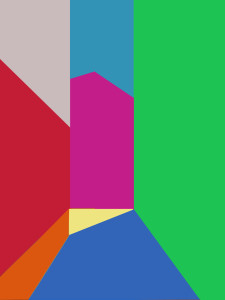An introduction to realistic and abstract artwork leads to a discussion of the geometric and organic shapes used by artists in their compositions. Students discover how artists draw what appear to be 3-dimensional geometric shapes and project them onto a 2-dimensional surface. They see that the way they draw an object affects how real it looks. The relationship between linear perspective and projective geometry is explained. Tracing around 2-dimensional geometric shapes, students create their own paintings. As they view and analyze one another’s work, they discuss their choices and decisions.
Mathematical Concepts
- Geometric shapes:
2-dimensional – circle, polygon: triangle, quadrilaterals (rectangle, square, parallelogram, rhombus, trapezoid), pentagon, hexagon, octagon; 3-dimensional – cylinder, sphere, hemisphere, cube, pyramid, cone - Geometric vs. organic shapes
- Math all around us: geometric shapes in the classroom and on our own bodies
- Projective geometry
Filippo Brunelleschi was a Renaissance architect and artist living in Florence. He was among the first to realize that in order to make sketches of buildings look “right,” he had to make the lines go a certain way. He also observed that the more distant parts of the structures looked smaller than those nearer to him. He developed his own rules about how to create the illusion of depth – what we now call “linear perspective.” Later, an architect and engineer named Desargues realized that this was a new kind of geometry in which rectangles could turn into trapezoids and parallel lines could meet! It was called Projective Geometry.

